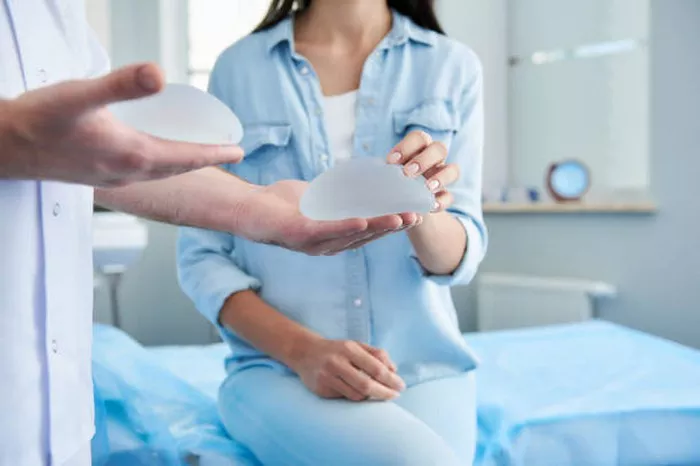Breast implants are medical devices used to enhance the size, shape, or contour of a person’s breasts. They are commonly used for cosmetic augmentation or reconstructive surgery after mastectomy. However, many people wonder: Are breast implants safe? The answer is not straightforward, as safety depends on factors like the type of implant, surgical technique, and individual health.
In this article, we’ll explore the safety of breast implants, the different types available, potential risks, and how to make an informed decision.
Types of Breast Implants
There are two main types of breast implants: saline and silicone. Each has its own advantages and disadvantages.
1. Saline Implants
Saline implants are filled with sterile salt water. They are inserted empty and filled once they are in place.
Pros:
- If the implant ruptures, the saline is harmlessly absorbed by the body.
- Smaller incision required for placement.
- Generally less expensive than silicone implants.
Cons:
- May feel less natural compared to silicone.
- Higher risk of visible rippling or wrinkling.
2. Silicone Implants
Silicone implants are filled with a cohesive silicone gel that mimics the feel of natural breast tissue.
Pros:
- More natural look and feel.
- Lower risk of rippling compared to saline implants.
Cons:
- If the implant ruptures, the silicone may stay within the implant shell or leak into the surrounding tissue.
- Requires regular MRI screenings to detect silent ruptures.
3. Gummy Bear Implants (Form-Stable Silicone Implants)
These are a newer type of silicone implant with a thicker gel that holds its shape even if the shell is broken.
Pros:
- Maintains shape better than traditional silicone implants.
- Lower risk of leakage.
Cons:
- Firmer feel compared to traditional silicone.
- Requires a longer incision for placement.
Are Breast Implants Safe?
Breast implants are considered safe for most people, but they are not without risks. The U.S. Food and Drug Administration (FDA) and other regulatory bodies have approved both saline and silicone implants for use, but they come with warnings about potential complications.
Key Safety Considerations
FDA Approval:
Both saline and silicone implants are FDA-approved, but they are not lifetime devices. Most implants last 10-20 years, and some may need to be replaced or removed due to complications.
Breast Implant Illness (BII):
Some individuals report symptoms like fatigue, joint pain, and cognitive issues after getting breast implants. While not officially recognized as a medical condition, many patients have found relief after removing their implants.
Breast Implant-Associated Anaplastic Large Cell Lymphoma (BIA-ALCL):
This is a rare type of cancer linked to textured breast implants. The risk is low, but it’s important to discuss this with your surgeon.
Capsular Contracture:
This occurs when scar tissue around the implant hardens, causing pain or distortion. It may require additional surgery to correct.
Rupture and Leakage:
Both saline and silicone implants can rupture. Saline ruptures are obvious, while silicone ruptures may be “silent” and require imaging to detect.
Infection:
As with any surgery, there is a risk of infection, which may require implant removal.
How to Choose the Safest Breast Implants
Choosing the safest breast implants involves careful consideration of your goals, health, and the expertise of your surgeon.
Here are some steps to help you make an informed decision:
1. Research Implant Types
Understand the pros and cons of saline, silicone, and gummy bear implants. Discuss your options with a board-certified plastic surgeon.
2. Choose a Qualified Surgeon
Select a surgeon with extensive experience in breast augmentation. Check their credentials, reviews, and before-and-after photos.
3. Discuss Your Medical History
Be honest about your health history, including any autoimmune conditions or allergies. This will help your surgeon recommend the safest option for you.
4. Understand the Risks
Ask your surgeon to explain the potential risks and complications associated with breast implants. Make sure you feel comfortable with the information before proceeding.
5. Follow Post-Surgery Care Instructions
Proper aftercare can reduce the risk of complications like infection or capsular contracture. Follow your surgeon’s instructions closely.
Long-Term Maintenance of Breast Implants
Breast implants require ongoing monitoring to ensure they remain safe and effective.
Here’s what you need to know:
1. Regular Check-Ups
Visit your surgeon annually to monitor the condition of your implants. This is especially important for silicone implants, which may require MRI screenings to detect silent ruptures.
2. Be Aware of Changes
Pay attention to any changes in your breasts, such as pain, swelling, or asymmetry. These could indicate a problem with the implant.
3. Plan for Replacement
Most implants are not designed to last a lifetime. Be prepared for the possibility of replacement surgery in the future.
Alternatives to Breast Implants
If you’re concerned about the risks of breast implants, there are alternative options to enhance your breasts:
1. Fat Transfer
This procedure uses your own fat, harvested from another part of your body, to add volume to your breasts. It’s a natural option but may not provide as dramatic a change as implants.
2. Non-Surgical Enhancements
Options like vacuum bras or injectable fillers can provide temporary enhancement without surgery.
3. Embrace Your Natural Shape
Sometimes, the safest option is to embrace your natural body. Confidence comes from within, and no procedure can replace self-love.
Conclusion
Breast implants can be a safe and effective way to enhance your appearance, but they are not without risks. By understanding the types of implants, potential complications, and how to choose a qualified surgeon, you can make an informed decision that aligns with your health and aesthetic goals.
Remember, safety should always come first. Take your time, do your research, and consult with a trusted medical professional before moving forward. Whether you choose implants or explore alternative options, the most important thing is to feel confident and comfortable in your own skin.
Related topic:

